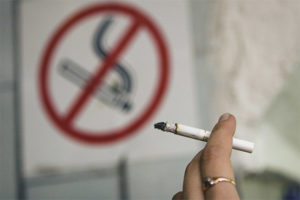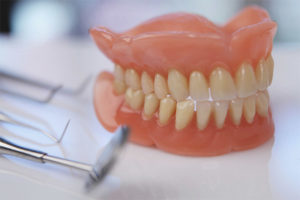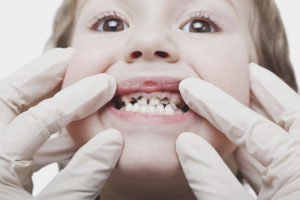The content of the article
- 1 When can I rinse my mouth if a tooth has been removed?
- 2 Rinse indications
- 3 What are the contraindications?
- 4 What can you make baths: improvised means
- 5 Effective pharmacological preparations
- 6 What rinsing agents can be used?
- 7 Can vodka or alcohol be used?
- 8 Can hydrogen peroxide be used?
- 9 Traditional medicine recipes
- 10 How to rinse your mouth?
- 11 Important notes
- 12 Video: how to rinse your mouth after tooth extraction
Many of us believe that the most difficult thing is directly removing the tooth. In fact, everything is different. Due to the fact that the doctor performs a real operation on the gums, after the tooth is removed, the patient may suffer from pain, inflammatory processes are also possible - if food debris accumulates in the hole. Consider how to rinse your mouth after tooth extraction, when it is necessary to do it and other interesting information about the procedures.
When can I rinse my mouth if a tooth has been removed?
After tooth extraction, many people wonder what can be done so that the wounded gum heals as quickly as possible. After the root has been removed from the hole, the doctor places a sterile gauze swab on the wound, which must be pressed down firmly and kept in this position for about 20 minutes. That is, we return home with a mouth that is covered in blood, with a feeling of pain (due to the fact that anesthesia begins to recede). Naturally, I want to somehow eliminate all these consequences of the operation - that is, rinse my mouth.
But researchers and doctors say it's not worth the rush. If you immediately start rinsing your mouth, you can destroy the blood clot that forms after removal - this is necessary in order to protect the wound from attaching a secondary infection.
In view of this, maxillofacial surgeons say: immediately after surgery, you can not rinse your mouth.
Rinse indications
If the tooth did not hurt before pulling out, purulent discharge was absent, then rinsing the mouth makes no sense. In this case, the wound will heal on its own without additional intervention.
A useful procedure will be if:
- There is an inflammatory process, that is, a tooth was previously sick, there was a temperature, a feeling of pulsation in the gums.
- Together with the extraction of the tooth itself, a cut was made in the gum due to a disease called flux.
- The teeth have collapsed. Such a moment can be associated with carious lesions, the presence of infectious processes. In this case, the hole will be reliably protected from possible lesions.
Important: as a result of rinsing, pathogens die, but the patient must remember that manipulations must be carried out carefully so as not to inflict even greater harm on oneself.
What are the contraindications?
You can not rinse your mouth in the following cases:
- after the procedure another 24 hours have passed;
- the doctor did not recommend the procedure;
- if the oral cavity has been sanitized, and the patient has a good state of the immune system.
If you do not follow the above rules, then the following can happen:
- frequent bleeding from the hole, the tissue will not heal well;
- the development of alveolitis or osteomyelitis - the so-called inflammatory process;
- suppuration of tissues.
What can you make baths: improvised means
So, consider what you can use to rinse your mouth - these ingredients are available in every family:
Soda and salt. Take 1 tsp. tablespoons of salt, stir in 200 gr. boiled water. There is no need to rinse - you can remove the clot. If desired, 1 tsp is added to the saline solution. soda.Such a prescription is recommended in cases where the patient has an abscess or fistula, and the doctor opened it.
You can prepare a decoction with herbs:
- eucalyptus;
- calendula;
- chamomile;
- sage.
To prepare a solution, you need 1 tbsp. medicinal herbs and a glass of water. Boil in a water bath for 15 minutes, cool, strain - you can use.
You can make a weak solution of potassium permanganate - this is a good antiseptic.
Furacilin is also an antiseptic, it is absolutely safe, therefore doctors recommend the solution of these tablets to their patients.
Effective pharmacological preparations
In some cases, the above recommendations are ineffective. Then you can apply the following medicines:
- Chlorhexidine Solution It works for several hours, perfectly kills all bacteria, is inexpensive. But it is unlikely to suit the child due to the fact that it has a specific aftertaste.
- Miramistin. It promotes wound healing, and also fights bacteria.
- Chlorophyllipt. The medicine is obtained from eucalyptus leaves. It also promotes wound healing, antiseptic, has an antibacterial effect.
- Salvin - contains alcohol, so before use, the product must be diluted with 1k10 water. It is important that the drug is not used if the patient suffers from pain, as well as irritation after applying the solution. The product has antimicrobial as well as anti-inflammatory effect.
- Stomatophyte. It contains medicinal herbs, the main effect of which is the same: antimicrobial, anti-inflammatory. It does not irritate the mucous membranes, so after 24 hours after removal, you can already carry out the procedure.
What rinsing agents can be used?
Herbal rinsers are quite popular:
- sage;
- chlorophyll;
- pine needles extract;
- St. John's wort
- oak bark, etc.
All such drugs have an antiseptic effect, also antibacterial and anti-inflammatory. You can buy them in specialized pharmacies, but before using it is important to consult a doctor.
Can vodka or alcohol be used?
In principle, we can assume that the use of these solutions is quite effective - because they have a pronounced antiseptic effect. But doctors strongly recommend abandoning such procedures for the following reasons:
- Repeated bleeding may occur.
- Alcohol can irritate the oral mucosa, due to which the healing process will take much longer.
- Perhaps the appearance of additional pain during contact with an open wound.
Can hydrogen peroxide be used?
It is believed that this drug is a fairly powerful antiseptic, it is often used to treat wounds. The solution in the course of its work decomposes into water and oxygen, releasing a fairly large amount of foam.
Many experts use 3% hydrogen peroxide, if you need to stop capillary bleeding after the tooth has been removed - the tool copes with this task, in addition, it has an antiseptic effect, that is, it disinfects the wound.
But at home, this method does not need to be used. Due to the fact that when it enters the hole, oxygen in the form of foam begins to be actively produced, which means that a blood clot can be easily damaged, which will not only stop the healing process, but even subsequently lead to infection of the wound. This tool is well suited only for local use, but the mucous membranes are damaged, causing irritation.
Traditional medicine recipes
Quite often, recipes verified by our grandmothers are very effective: they eliminate pain, disinfect the wound, and they are not harmful, unlike pharmacy solutions.The exception is only individual intolerance to medicinal herbs.
So, consider the most popular recipes:
- It will take 30 gr. chamomile, as well as 60 grams of St. John's wort. All you need to pour boiling water in the amount of one and a half glasses, then cover with a warm towel, close the lid and insist for 1.5 hours. Such a solution is perfect if after removing a tooth the gum becomes inflamed - it is enough to gargle your mouth 4 times a day after meals.
- It will take 30 grams of sage, chamomile, marigold - pour the resulting herbs collection with a glass of hot water and send to a water bath, 15 minutes will be enough. Cool the resulting solution and filter. It is also important to rinse your mouth in case of inflammation, the presence of pain. All of the above herbs have a powerful antiseptic effect.
- We take 60 grams of oregano flowers, they need to be poured with one and a half liters of boiling water, then leave to brew - until the solution cools down. The tool is very praised due to the pronounced effect and a rather pleasant taste.
- It will take 60 gr. St. John's wort, mix them with 20 grams of needles. Before use, make sure that the raw materials are well crushed. Pour 200 ml of boiling water, then send to the fire. Cook for about 15 minutes over low heat, then insist about another 1.5 hours. With this decoction, moisten a cotton-gauze swab, and then apply it to the hole for 5-7 minutes where the tooth was removed. The procedure is repeated 2-3 times a day.
Important: Despite the fact that all of the above recipes have been tried and tested many times already, in any case, you must first consult a doctor before using them, since undesirable allergic reactions can occur.
How to rinse your mouth?
In general, usually the specialist after the procedure gives clear recommendations on how to properly rinse, without damaging the blood clot in the hole and accelerating the healing process.
- You need to prepare a solution that you will use to rinse - you can choose from the entire list that we provided to you earlier. The liquid must be at room temperature - so as not to burn the mucous membrane.
- Pour about 15-20 ml of solution into a measuring cup, gently draw liquid into the mouth, and no rinsing movements are necessary. To better penetrate the fluid into the hole where the tooth was removed, you need to tilt your head to the side.
- It is necessary to hold the liquid in the mouth for a couple of minutes without swallowing.
- Spit out the contents from the mouth, after rinsing the oral cavity is not necessary.
- The procedure is repeated 3-4 times a day.
Important notes
It is necessary to make some adjustments so that rinsing the oral cavity does not cause particular harm:
- Miramistin is prescribed for children and pregnant women - it is not dangerous, and has no contraindications.
- Do not zealous rinse, as this can only aggravate the process. Three to four rinses per day will be enough.
- If there was a flux, you should not self-medicate! We use only those drugs that have been prescribed by the dentist.
- If the patient does not feel well, the temperature has risen - then he needs to see a doctor as soon as possible, most likely, the use of antibiotics is required.
- It is better for the child not to prescribe bitter solutions with a pronounced unpleasant taste - he can simply abandon this venture. In addition, the baby must know that in no case should you swallow the solution.
- If during the tooth extraction there were no complications, the doctor did not prescribe rinsing, which means that there is no need for them.
Video: how to rinse your mouth after tooth extraction












Submit